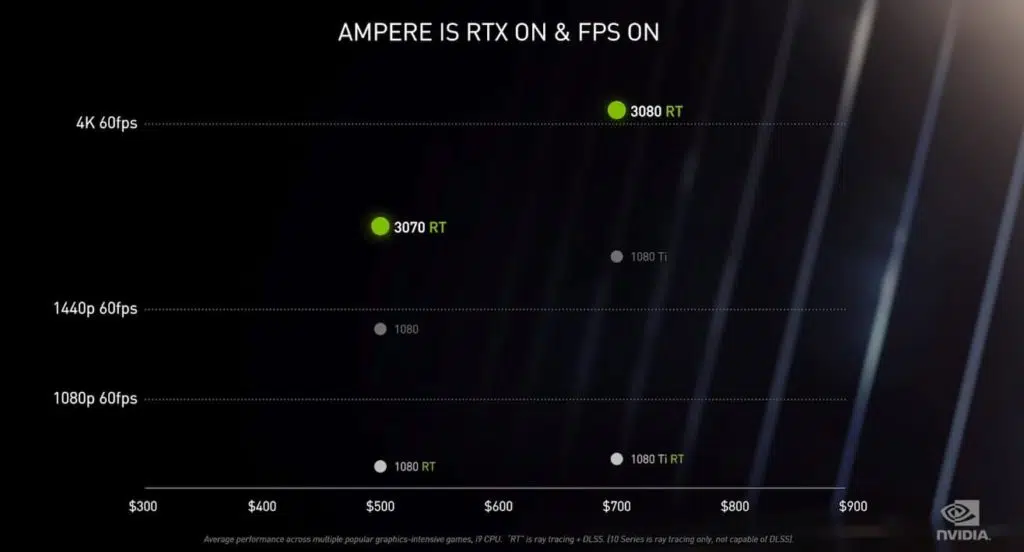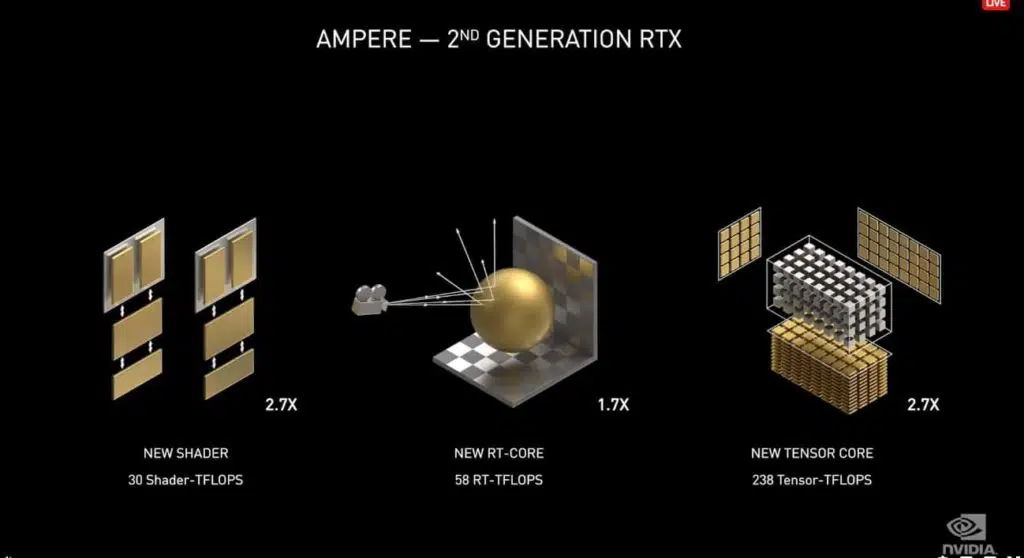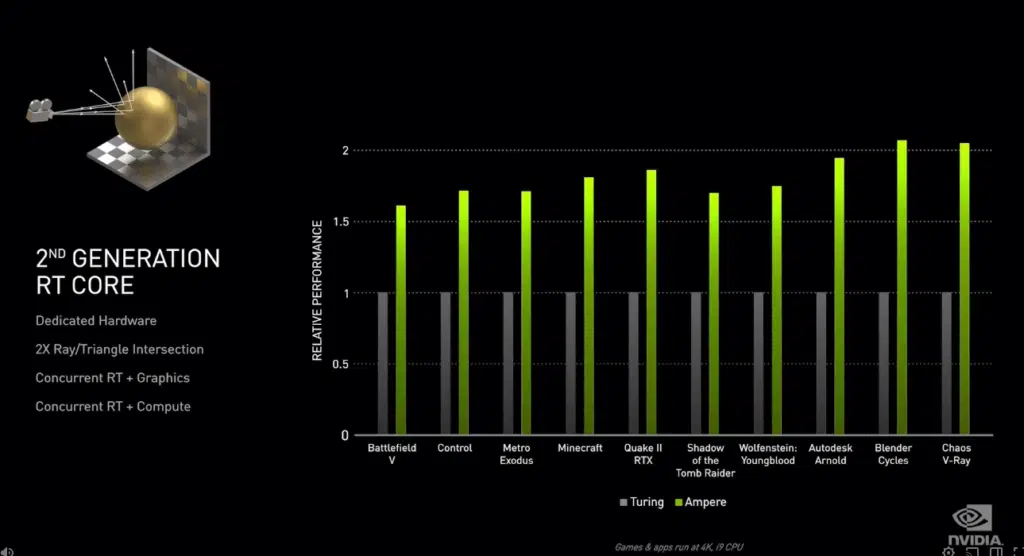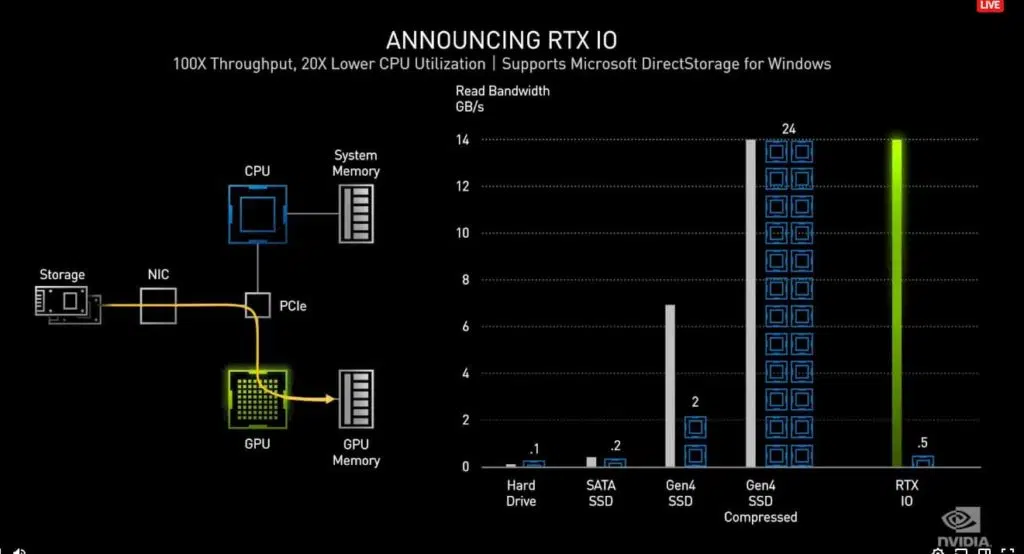
NVIDIA’s September 1, 2020 special event is upon us (after being teased last month) and we’ve watched the broadcast to summarize all of the new announcements. Jensen Huang hosted as they moved through each of the innovations that are being publicized today which includes the launch of the RTX 3090, RTX 3080 and RTX 3070 GPUs in the Ampere family. You can watch the entire announcement below:
RTX 3090
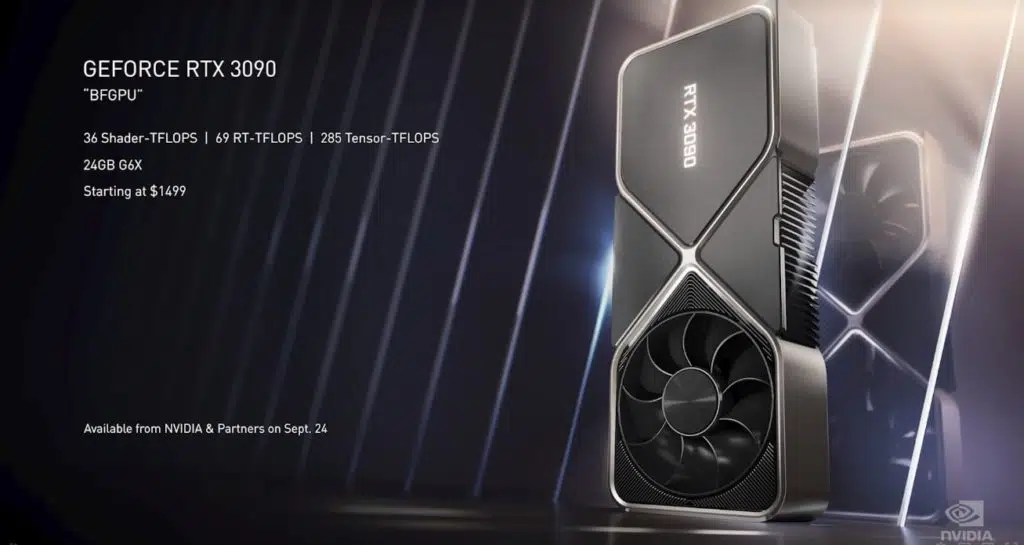
The GeForce RTX 3090 takes the king of the hill crown as the Ampere generation Titan card. It sports 10496 CUDA Cores, 36 Shader-TFLOPS, 69-RT-TFLOPS, 285 Tensor-TFLOPS and 24GB of GDDR6X running at a boost clock of 1.7GHz using a card power of 350W. The RTX 3090 will be available September 24 for $1499.
NVIDIA also teased the RTX 3090 as the world’s first 8K GPU. They claim that with RTX and DLSS On, it’s able to provide a good experience at 8K, however, given our experience with DLSS we’re not sure that would be worth the trade off. We’ll dive into this a bit more when the cards launch to see if these claims can possibly be true.
GeForce RTX 3080
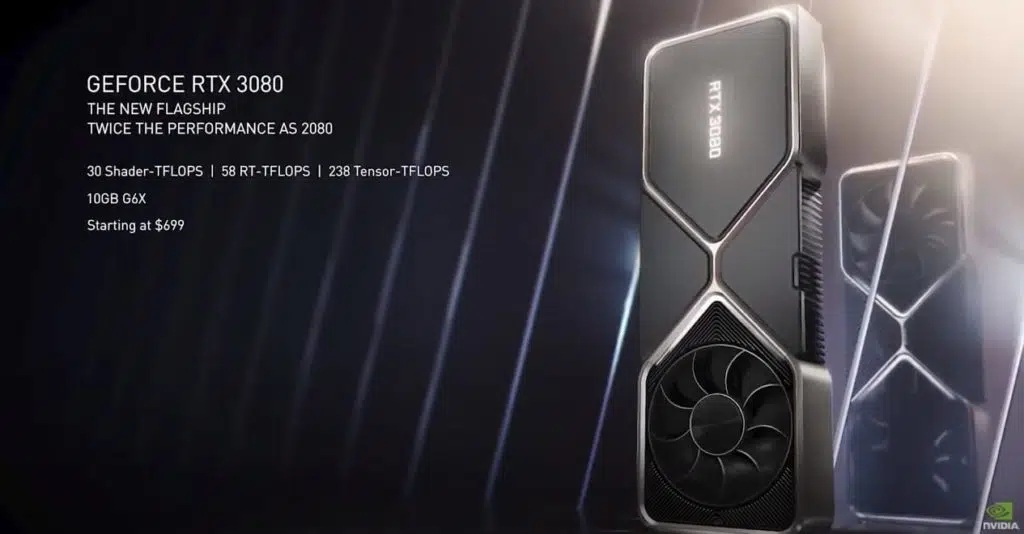
The GeForce RTX 3080 turns in 8704 CUDA Cores, 30 Shader-TFLOPS, 58 RT-TFLOPS and 238 Tensor-TFLOPS and sports 10GB of GDDR6X at a 1.71GHz boost clock using 320W of board power as NVIDIA’s new flagship GPU. NVIDIA claims that the 3080 will perform twice as fast as the RTX 2080. It will start at $699 and will be available on September 17.
As we’ve reported before, there’s a new cooler in town that NVIDIA calls a flow through system. Heat pipes take the heat to the front and back of the card where each fan has direct access to cool air and allows it to pass through the system in an efficient manner. NVIDIA claims that this is three times quieter, 20 degrees cooler and can handle 90w more heat that the Turing generation coolers.
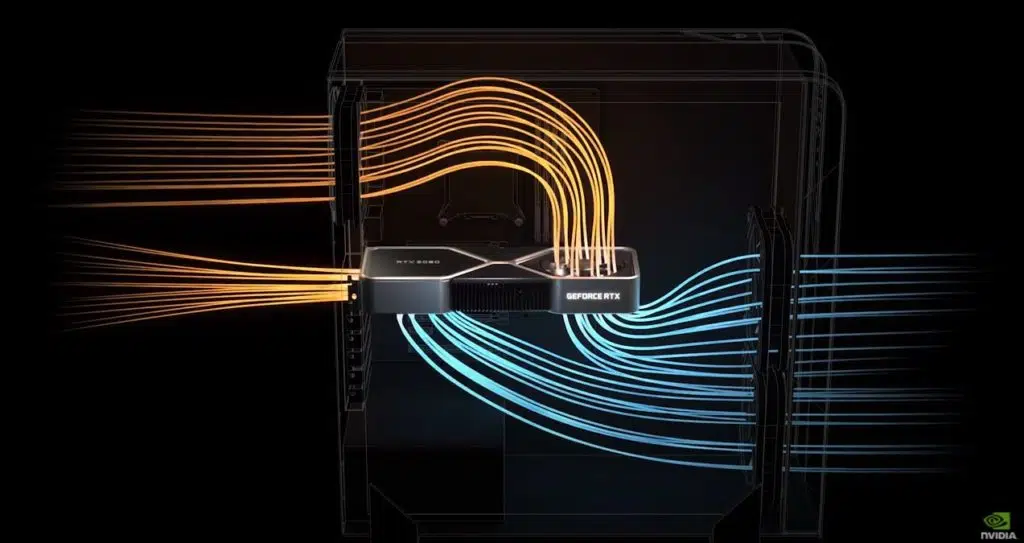
NVIDIA Flow Through Cooling Diagram 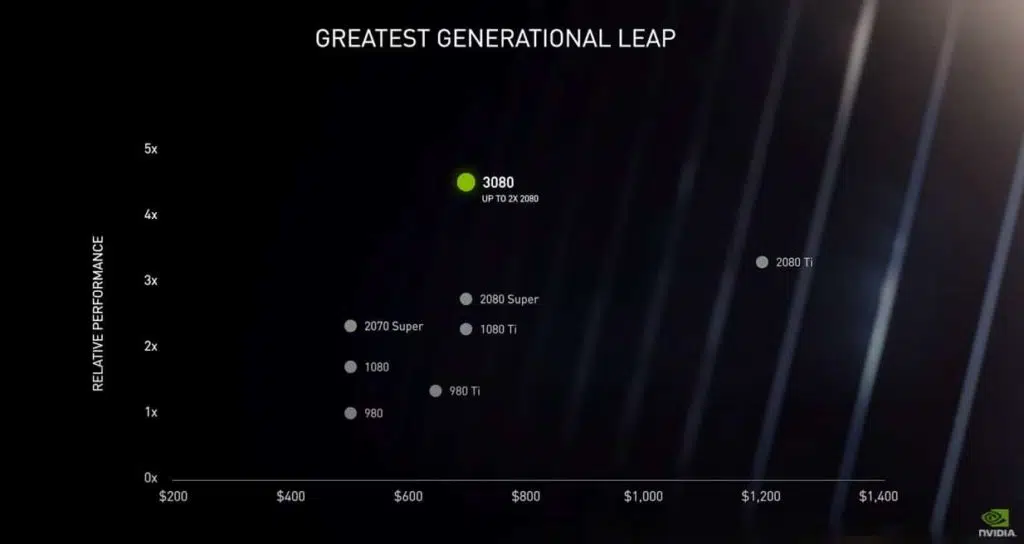
GeForce RTX 3070
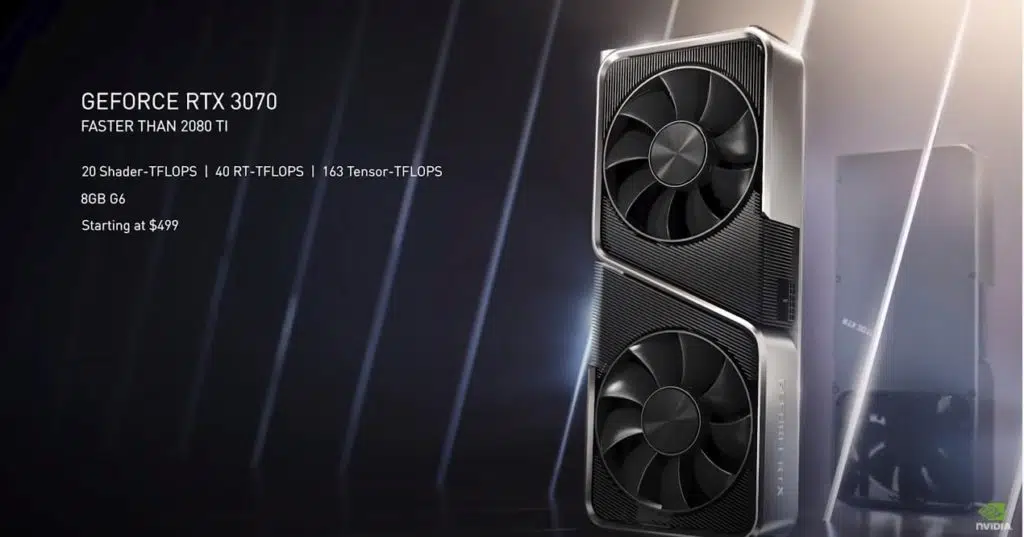
The GeForce RTX 3070 claims to be faster than the GeForce RTX 2080 Ti. It feautres 5888 CUDA Cores, 20 Shader-TFLOPS, 40 RT-TFLOPS, 163 Tensor-TFLOPS and has 8GB of GDDR6 memory at a 1.73GHz boost clock using 220W of card power. The RTX 3070 has a more traditional GPU cooling solution and will not have the flow through that’s found on its bigger brothers. NVIDIA claims that the RTX 3070 is 60% faster than the RTX 2070. It will start at $499 and be available in October.
Ampere Overview
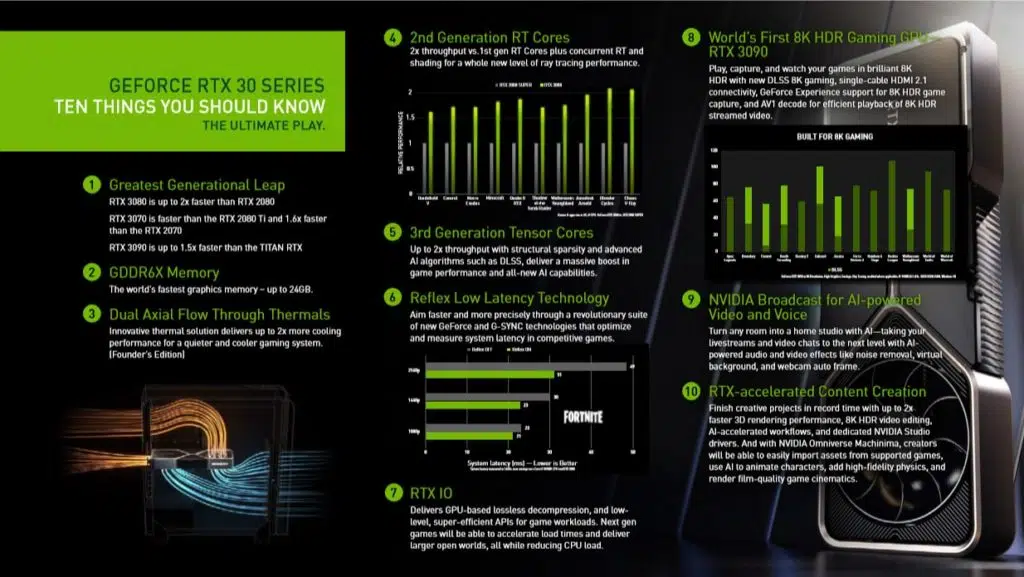
To quickly summarize Ampere as a whole, Ampere is bringing 2.7X higher shader performance, 1.7 X higher RT performance, 2.7X higher Tensor performance using 28 billion transistors on Samsung’s 8nm process and will have Micron GDDR6X memory. Various innovations are being touted such as RTX IO for loading maps faster at lower CPU usage, RTX-accelerated content creation and a huge leap in ray tracing performance over the Turing generation of GPUs. HDMI 2.1 finally comes to NVIDIA GPUs along with support for AV1 decode.
Fortnite Turns RTX On

NVIDIA announced that ray tracing is coming to Fortnite soon. No other details were given other than a short trailer that demonstrates the extra eye candy provided by ray tracing. Once we find out more, including a release date for the RTX goodies, we’ll let you know.
NVIDIA Reflex
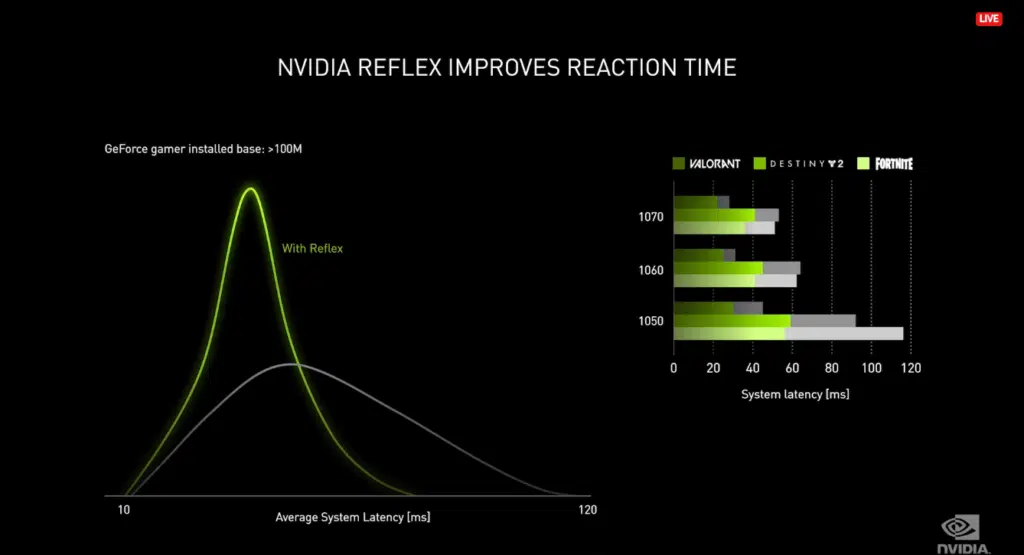

NVIDIA announced the introduction of NVIDIA Reflex, their way of decreasing latency to their users to improve performance. Paired with their new series of GSync 360Hz from various manufacturers, they expect this to give a big boost to gaming performance. The demo that they used to show off the differences looks a lot like the demo that we tried at CES back in January and we’ll see if this translates into any real-world performance boosts.
NVIDIA Broadcast
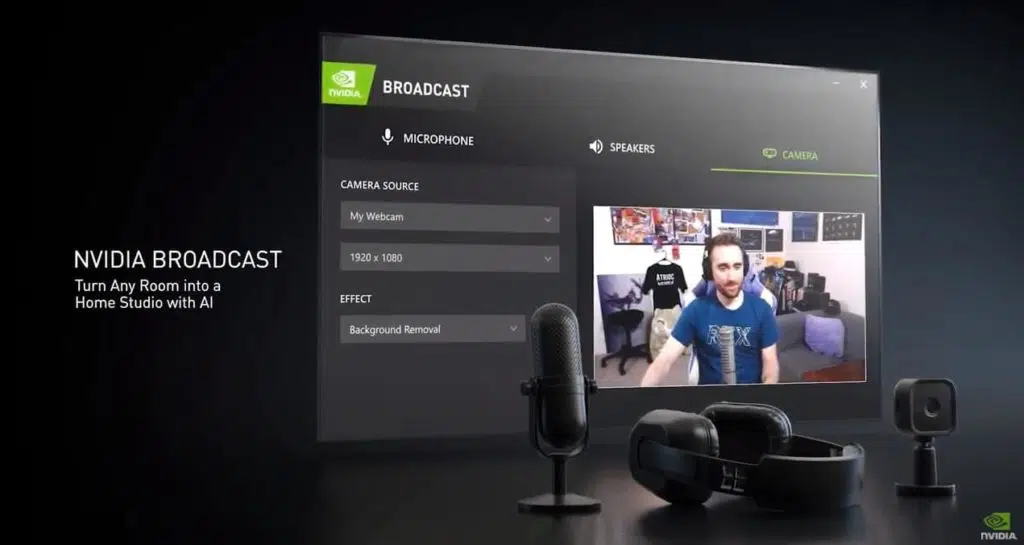
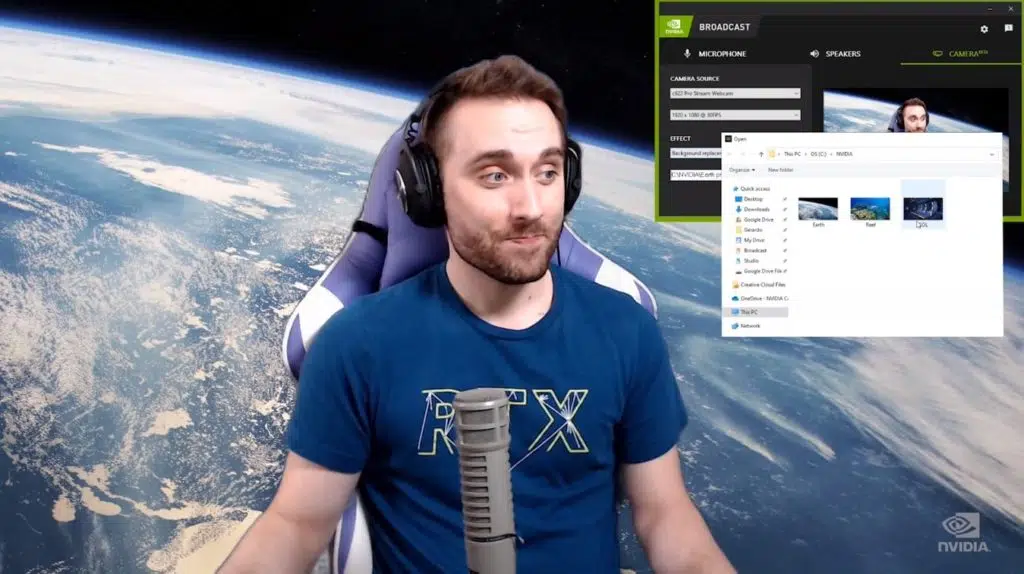
Building upon the launch of the RTX Voice Beta from earlier this year, NVIDIA Broadcast used AI to learn how to do background noise removal, background effects (including replacing with a background image or the game that you’re playing) and camera tracking. It will be available for download in September and work any RTX GPU (or maybe, some GTX GPUs too?).
Final Points
This announcement from NVIDIA has confirmed a lot of the rumors that have been flying around for the past few months and we’re looking forward to getting our hands on the hardware to see if it is as good as they claim it to be. Keep checking in for more news as we dive into the pile of announcements being made and for our reviews in the future!

